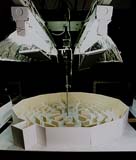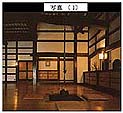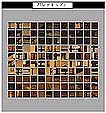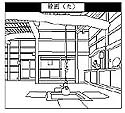|
 Effect of Wall Texture on Perceptual Spaciousness of Indoor Space
Effect of Wall Texture on Perceptual Spaciousness of Indoor Space
|
|
<Int. J. Environ. Res. Public Health 2020, 17(11), 4177; https://doi.org/10.3390/ijerph17114177, June 2020 >
|
| Chong Wang, Wei Lu, Ryuzo Ohno and Zongchao Gu |
|
As the main place of people’s daily activities, indoor space (its size, shape, colors, material and textures, and so on) has important physical,
emotional and health-based implications on people’s behavior and quality of life. Material texture is an integral part of architectural environment perception and quality
evaluation, but the effect of material texture on perceptual spaciousness lacks the support of experimental data. This research examined the effects between different wall
textures on the observer’s perception of spaciousness in indoor space, the influence of wall texture changes in different room sizes, and how the associational meaning of
texture affects the degree of influence of wall texture on the spaciousness of indoor space. By using VR technology and the magnitude estimation (ME) analysis method, the
authors found that the effect of wall texture on perceptual spaciousness varies depending on the wall material, and the textural effect is affected by room size. The perception
of spaciousness is influenced by the observer’s associational meaning of material texture, and the influence of associational meaning of material texture varies contingent on
the room size. In relatively small rooms, the objective aspect (such as hardness, surface reflectivity, texture direction and texture depth) of the wall texture has a significant
impact on perceived space. In contrast, the effects of subjective aspects (such as affinity and ecology) become more pronounced in relatively larger rooms. This research makes up
for the lack of material texture research in perceptual spaciousness, and provides a new way for the designer to choose materials for the design of a spatial scale.
|
|
Full paper ⇒ Online
|
|
 Effective Visual Clue on Recovering Orientation in an Interior Space
Effective Visual Clue on Recovering Orientation in an Interior Space
|
|
<Proceedings of the 5th EBRA International Symposium for Environment-Behavior
Studies, Shanghai, China, 155-160, 2002>
|
| Masashi Soeda, Ryuzo Ohno |
|


|
Our previous study revealed that people tended to lose orientation after such
vertical traveling as stairs, elevators and escalators, and that some of the
subjects could recover it by environmental information. Although the result
suggested that the source of information for recovering differed with person and
space, we could not specify effective information.
The present research intends to clarify influential visual information on recovering orientation using a visual simulator that enables a subject who wears a Head Mounted Display to walk through and to look around in a model space freely. Three settings of scale models of a two-story library were used in the experiment. In each setting, subjects were led from a start point on the first floor (information desk) to a destination on the second floor (a bookshelf) via elevator, and then they were asked to go back to the start point by themselves. In order to provide a possible visual clue for the subjects to find the start point, the scene that the subjects saw when they get off the elevator on the first floor was differentiated with left and right side by the following conditions: A) windows, B) walls with different colors (no windows), C) walls with same colors and same finishing (no differentiation). 46 graduate students were enrolled in the experiment.
The results indicates that more than 90% of the subjects could find the start point in the setting with windows, whereas 60% of the subjects succeeded in the setting with walls with different colors and less than 50% did in setting with no differentiated visual information. The interview conducted after the experiment reveals that more than 90% of the subjects used the windows to identify where the start point is, however, less than 60% used different colors on the wall. It also shows that almost all the subjects who did not use visual information mentioned above failed to find the start point. These results show that visual information provided by spatial elements helps people to recover orientation in the space, and that the windows are more effective for recovering orientation than changes of colors on walls are. The cause is considered to be the different characteristics of the visual information. Windows give spatial expansion, a view to outdoors and brightness to interior space. These characteristics of windows, which walls do not have, are considered to serve as an effective clue for orientation in an interior space. These results imply that it is important for legible interior space to arrange windows at the place where people tend to lose orientation.
Full paper → PDF (EBRA2002)
|
|
 The
Relation between Schemata of Rooms in a House and Evaluation of Restfulness The
Relation between Schemata of Rooms in a House and Evaluation of Restfulness
|
|
<Summaries of Technical Paper of Annual Meeting of Architectural Institute
of Japan (E-1), Pp.773-776, Sep. 1997>
|
|
Takayuki Shimizu, Ryuzo Ohno
|
   |
This study intends to clarify the hypothesis that the evaluation of restfulness
of a room depends on how it looks closer to observer's schemata. The study
conducted an experiment, in which 28 subjects were asked to evaluate 35
pictures of various home interior spaces according to its restfulness and
to judge their similarity to one's own image of one of such rooms as living
room, dining room, Japanese style room, bedroom and bathroom. As a result,
the hypothesis is generally supported by an average analysis although some
of schemata for a certain room are not shared.
The analysis of the individual subject's data reveals that even if the
score of evaluation differ among the subjects, each subject evaluates the
interior space according to one's own schemata. Thus the hypothesis is
more clearly supported by the individual analysis than the average one.
|
|